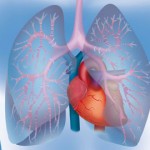The study: Rogers B, Famenini S, Perin J, et al. Clinical features associated with rate of fractures in patients with SSc: A United States cohort study. Arthritis Care Res (Hoboken). 2023 Apr 24. doi: 10.1002/acr.25137. Epub ahead of print. PMID: 37093022.
Clinical Response in JIA
By Robert Wong, MD, & Hermine Brunner, MD, MSc
Why was this study done? Measurement of the clinical effectiveness of treatments for polyarticular-course JIA (pcJIA) in clinical trials is based on response differences between patient groups. However, data on the frequency and trajectories of long-term clinical responses in individual patients with pcJIA are scarce. Thus, the ability of individual children with pcJIA being treated with abatacept to achieve and sustain simultaneously meaningful clinical and patient-reported outcome (PRO) end points was assessed.
Study methods? We conducted a post hoc analysis of children with pcJIA aged 2–17 years old treated with subcutaneous (SC; n=219) or intravenous (IV) abatacept (n=190). Novel composite end points that combined meaningful clinical and PRO end points were evaluated in individual patients. They included low disease activity (LDA) measured by the Juvenile Arthritis Disease Activity Score (JADAS), and 50% improvement as measured by the JIAACR Criteria (JIA-ACR50); PROs included a visual analog scale (VAS) of minimal pain and no disability in physical function as reflected in a Childhood HAQ-DI score of 0. Maintenance of these combined end points was assessed at months 13 and 21 in those individual patients who achieved them at month 4—the time of the original pharmacokinetic primary end point. Heat maps and Sankey diagrams were used to assess an individual child’s response and the summation of the course of individual patients meeting these end points over time, respectively.
Key findings? Composite end points (LDA+pain-min, LDA+CHAQ-DI0 and ACR50+pain-min) were achieved at month 4: 44.7%, 19.6% and 58.9% of the overall group of patients treated with SC abatacept, respectively. Of those who achieved LDA+pain-min at month 4, 84.7% (83/98) and 65.3% (64/98) maintained LDA+pain-min at months 13 and 21, respectively. The frequency of patients who met LDA+ CHAQ-DI0 increased from 19.6% at month 4 to 28.8% at month 21. Of the 58.9% who achieved ACR50+pain-min at month 4 in the SC arm, 84.5% maintained this at month 13 and 73.6% maintained this at month 21. Heat maps showed the majority of individual children who achieved LDA+painmin, LDA+ CHAQ-DI0 and ACR+pain-min at month 4 maintained this status at month 13 (87.8%, 84.0%, and 81.4%, respectively) and month 21 (72.4%, 72.0%, and 60.5%, respectively). Sankey diagrams showed the proportion of patients achieving LDA+pain-min increased from 44.7% at month 4 to 54.8% at month 21. Patients who were LDA+pain-min responders maintained their response over time. Likewise, the proportion meeting the LDA+CHAQ-DI0 end point increased from 19.6% at month 4 to 28.8% at month 21. Responders for the ACR+pain-min end point increased from 58.9% at month 4 to 63.5% at month 21. Results of the IV arm were similar to the SC arm.
